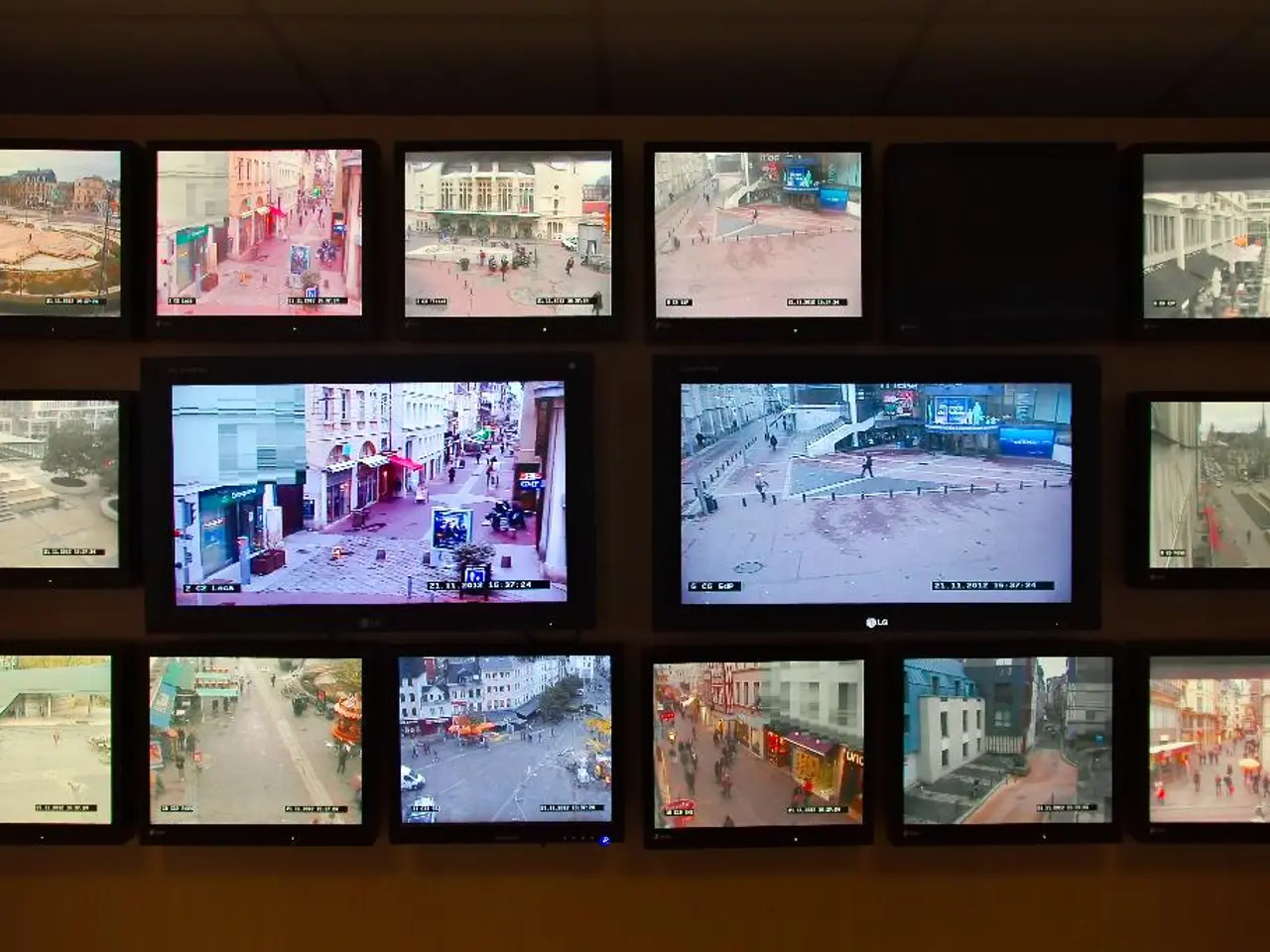Improving Your Sound Recordings: Quick Tips for Better Sessions
In the realm of home recording, mastering is the final touch, optimizing tracks for playback on various devices and adjusting final levels. To ensure high-quality recordings, it's essential to invest in essential recording equipment, optimize your recording space, and understand the best microphone types for various sound sources.
For vocals, large diaphragm condenser microphones (LDCs) are considered the best choice due to their ability to capture detail and clarity with low self-noise. Examples include the Rode NT1 and Audio-Technica AT2020, which offer clean, natural vocal recordings. The Shure SM7b, a dynamic mic, is also highly regarded for vocals needing a warm, solid tone, especially in untreated rooms or for broadcast style.
Acoustic instruments like guitar, piano, and drum overheads benefit from condenser microphones. Small diaphragm condensers (SDCs) are especially good for acoustic guitar due to their quick transient response and detail capture. Large diaphragm condensers also perform well for instruments needing warmth and depth.
Dynamic microphones are preferred for loud, high SPL sound sources like guitar amps and drums due to their ruggedness and lower sensitivity, which helps prevent distortion. Ribbon microphones provide a vintage sound character with warm, smooth tones suited for studio applications where that aesthetic is desired.
In general, condenser microphones are most versatile for vocals and acoustic instruments due to their sensitivity and frequency response, while dynamic microphones excel on louder sources and in untreated rooms. Ribbon mics represent a specialized choice for tonal character.
Basic audio editing techniques include trimming unnecessary parts, using fade-ins and fade-outs, and maintaining consistent volume levels. For outstanding music production, start by focusing on your equipment, selecting quality instruments and recording gear, and ensuring your recording environment is free from echoes and distractions.
Creating high-quality podcasts involves selecting the right equipment, positioning microphones correctly, and creating a quiet and acoustically treated environment. MP3 files are compressed, reducing file size at the cost of some audio detail, perfect for casual sharing or distribution. Choosing a quality microphone is essential for recordings.
Thorough preparation and understanding of essential tools are key to capturing quality sound in audio recording. Sufficient headroom is crucial to avoid clipping, where audio distorts due to excessive amplitude. Aim for peaks around -6 dB when recording. Invest in a reliable audio interface to achieve pristine audio recordings.
Acoustic treatment is crucial for high-quality recordings, reducing noise and echoes. Soundproofing involves blocking outside noise using materials like mass-loaded vinyl or acoustic curtains. Identifying and avoiding noise sources is another critical step in recording.
Enhancing sound quality during editing involves a variety of approaches, ranging from basic audio adjustments to advanced methods like noise reduction and equalization. Advanced editing strategies ensure your recordings sound their best.
Investing in the right equipment, optimizing your recording space, and understanding the best microphone types for various sound sources are crucial steps in mastering the art of home recording. With the right tools and techniques, you can create professional-quality recordings from the comfort of your home studio.
- To attain high-quality vocal recordings, consider investing in large diaphragm condenser microphones (LDCs) such as the Rode NT1 or Audio-Technica AT2020.
- Acoustic instruments like guitar can benefit from small diaphragm condenser microphones (SDCs), due to their quick transient response and detail capture, or large diaphragm condenser microphones for warmth and depth.
- Dynamic microphones like the Shure SM7b are great for loud, high SPL sound sources like guitar amps and drums, while ribbon microphones offer a vintage sound character with warm, smooth tones.
- Mastering home recording involves selecting quality instruments, investing in essential recording equipment, understanding the best microphone types for various sound sources, and optimizing your recording space.
- Creating high-quality podcasts necessitates selecting the right equipment, positioning microphones correctly, and creating a quiet, acoustically treated environment.
- In audio recording, sufficient headroom is crucial to avoid clipping and distortion, aim for peaks around -6 dB when recording.
- Acoustic treatment, including soundproofing and noise reduction, is essential for high-quality recordings, reducing noise and echoes.
- Beyond basic audio editing techniques, advanced editing strategies ensure recordings sound their best, including noise reduction and equalization.
- The essential tools and techniques Mastering the art of home recording can lead to professional-quality recordings in the comfort of your home studio.




